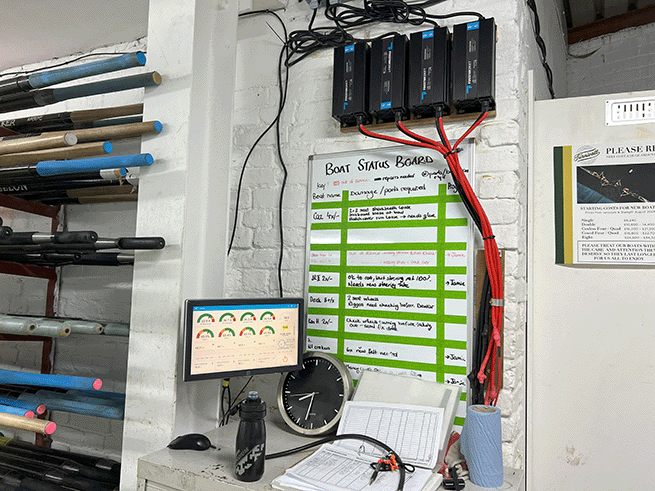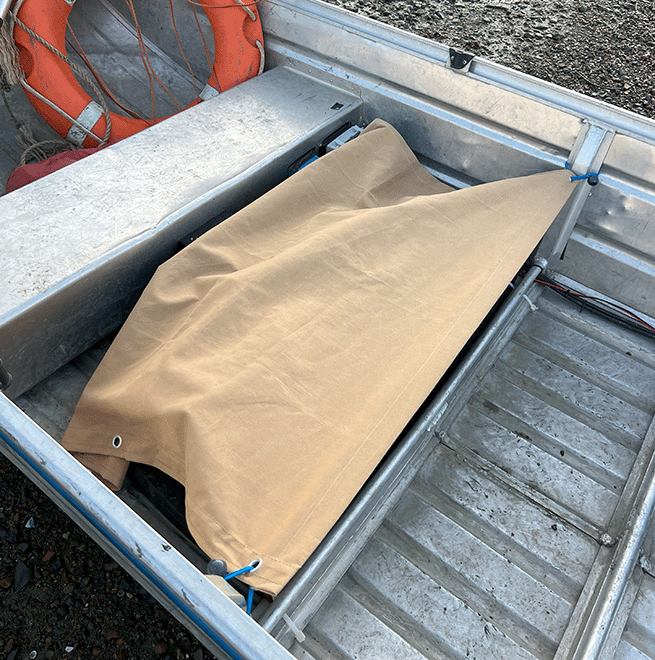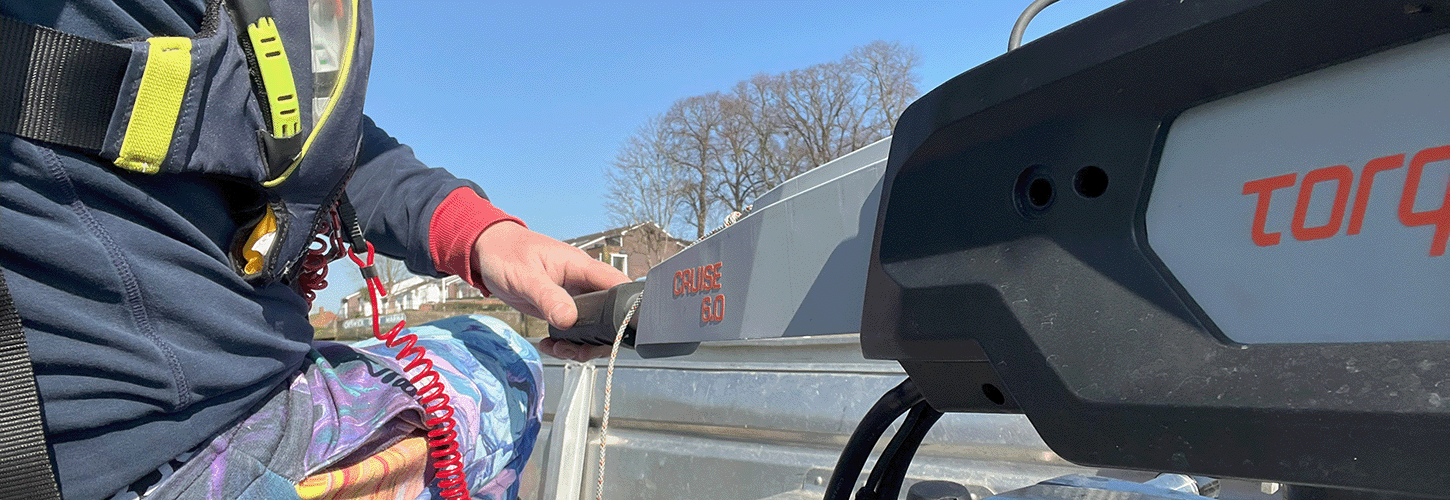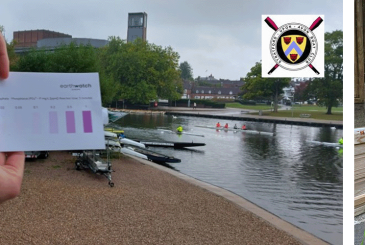In recent years a number of clubs have decarbonised their launches outboards – and found other benefits in the process too. Furnivall Sculling Club Head Coach John Hickling, one of the pioneers of electric outboards on the Tideway, explains more.
In a bid to reduce environmental impact and overcome logistical challenges, Furnivall SC, Auriol Kensington RC, Fulham Reach RC and Putney Town RC amongst others have turned to electric propulsion systems to support their training programs. With grants from the Port of London Authority’s Thames Environment Fund, these clubs have invested in state-of-the-art Torqeedo motors, reshaping how they follow and coach their crews on the water.
The cost and investment
Switching to electric motors five years ago came at a substantial upfront cost. This is now reducing due to cheaper batteries and more competition amongst manufacturers of electric outboards, which means that investment in this technology is now accessible for the majority of clubs. Furnivall SC selected the Cruise 6.0 TS Torqeedo motor, a reliable option from an established manufacturer, due to its excellent power-to-weight ratio. This was essential given the club’s challenging access to the river, including steps and ramps.

For Furnivall’s latest project the motor cost £3,875, complemented by a set of four 12v 105ah Lithium Iron Phosphate batteries at £250 each. Torqeedo also offers 48v batteries with advanced features like range estimation, but these come at a premium price of £5000. The club felt that the choice of the more affordable 12v batteries provided the best balance of cost against functionality.
Battery charging
Establishing charging infrastructure, including Home Assistant software for battery monitoring, was another critical step in ensuring seamless operation.
Furnivall installed four 12V Lithium Iron Phosphate chargers tailored to the battery setup.

Addressing range anxiety
One of the primary concerns when adopting electric systems was understanding their range and ensuring that they could meet the demands of coaching sessions. Here’s how the motors have been performing across various crew levels:
- Senior level crews: Two x 1-hour sessions of fast-paced training
- Club squads: Three x 1-hour outings
- Novices: Up to four x 1-hour sessions.
With Bluetooth-enabled battery monitoring systems, coaches could easily track remaining battery life via their smartphones. This provided peace of mind and allowed uninterrupted focus on athletes. For coaches without a smartphone, a battery monitor was fitted to the launch giving accurate state of charge information for the operator.
Power and performance
Electric motors proved more than capable of keeping pace with eights, achieving top speeds of between 30 and 34 kph depending on the conditions, type of launch used and passenger numbers. While handling them required a learning curve – similar to adapting to driving an electric car – the responsive throttles became intuitive within just 10 minutes of use.
Perhaps the main difference is that when making rapid switches from forward to reverse – to hold station with a crew you’re talking to, for example – electric outboards take a short time to change direction as they are direct drive. However, this avoids potential damage to gearboxes and time to shift isn’t a significant safety concern.
Suitable launches
The clubs also looked at how adaptable their existing boats are for electric outboards and found that Seastrike semi-flat and Polar Kraft/Marine V hull designs perform well with electric motors. Other makes are likely to be compatible too.
As the batteries meet the IP67 standard for waterproofing, they are fine getting wet, but they need not to get too hot. In order to shade them from the sun in summer, John originally installed a large plastic crate to house them, but it proved to be too compact and with the lid on the batteries were getting hotter than was ideal. The batteries now sit in a foam harness (shown above) that’s attached to the deck of the Seastrike, with this simple canvas cover providing shade.

Simplifying and improving the ‘user experience’
Electric propulsion systems demanded a slight shift in user behaviour, so training was critical in ensuring as smooth switch to the new operation.
Fetching fuel and storing was once a logistical headache for clubs; remembering to plug the batteries in is now the ‘chore’. However, just like remembering to put your phone on change when you get home, it’s just a case of getting into new habits.
Connecting the electric motor is slightly more complicated than attaching the fuel line and making sure there is fuel to the engine. But pressing a button to turn it on as opposed to pulling on a starter cord endlessly makes this knowledge worth gaining and delivers a more pleasurable experience that coaches who struggled to pull starter cords will welcome.
Being able to sit in silence in the launch without choking on petrol fumes when idling next to a stationary crew is also a significant health and environmental benefit. Another is being able to hear what the crew is saying as well as not having to use a megaphone in close quarters are further wins. And although more of a niche win, one coach found that the lack of engine vibration meant he could now use a fixed camera mount to take video and photos from the launch.
Conclusion: Choose electric
The clubs I’ve worked with to date are looking to expand their electric powered fleet and will be eliminating petrol powered launches in the future, particularly as prices continue to drop as technology is optimised.
Like any spend, clubs need to develop a business case for change, particularly for the initial charging infrastructure. However, in our experience, the savings from reduced running costs and the benefits to user experience and the environment make investment a no-brainer.
The clubs would like to thank the PLA for their generous support.
If you have any questions about transitioning to electric outboards please contact John [email protected]
Photos; John Hickling.










